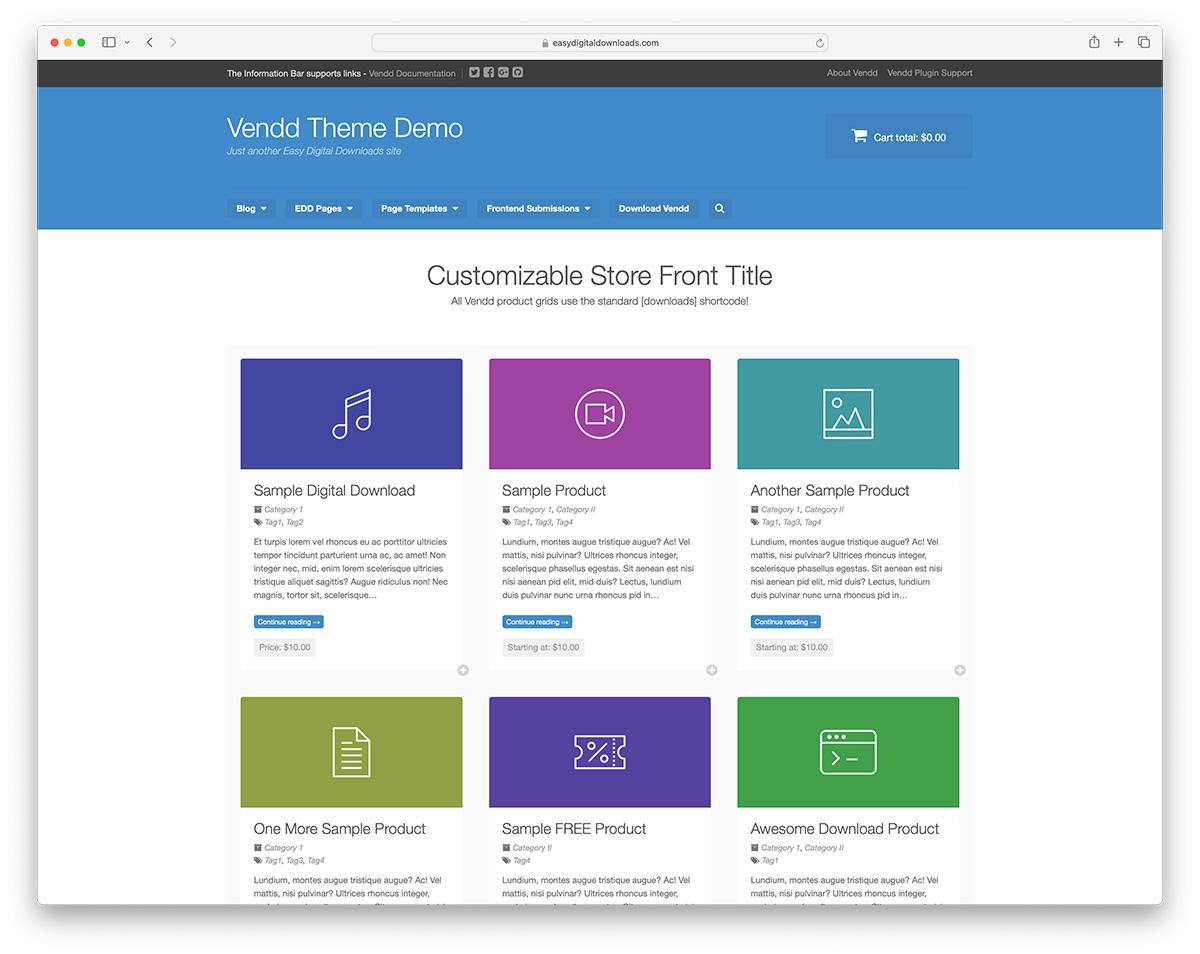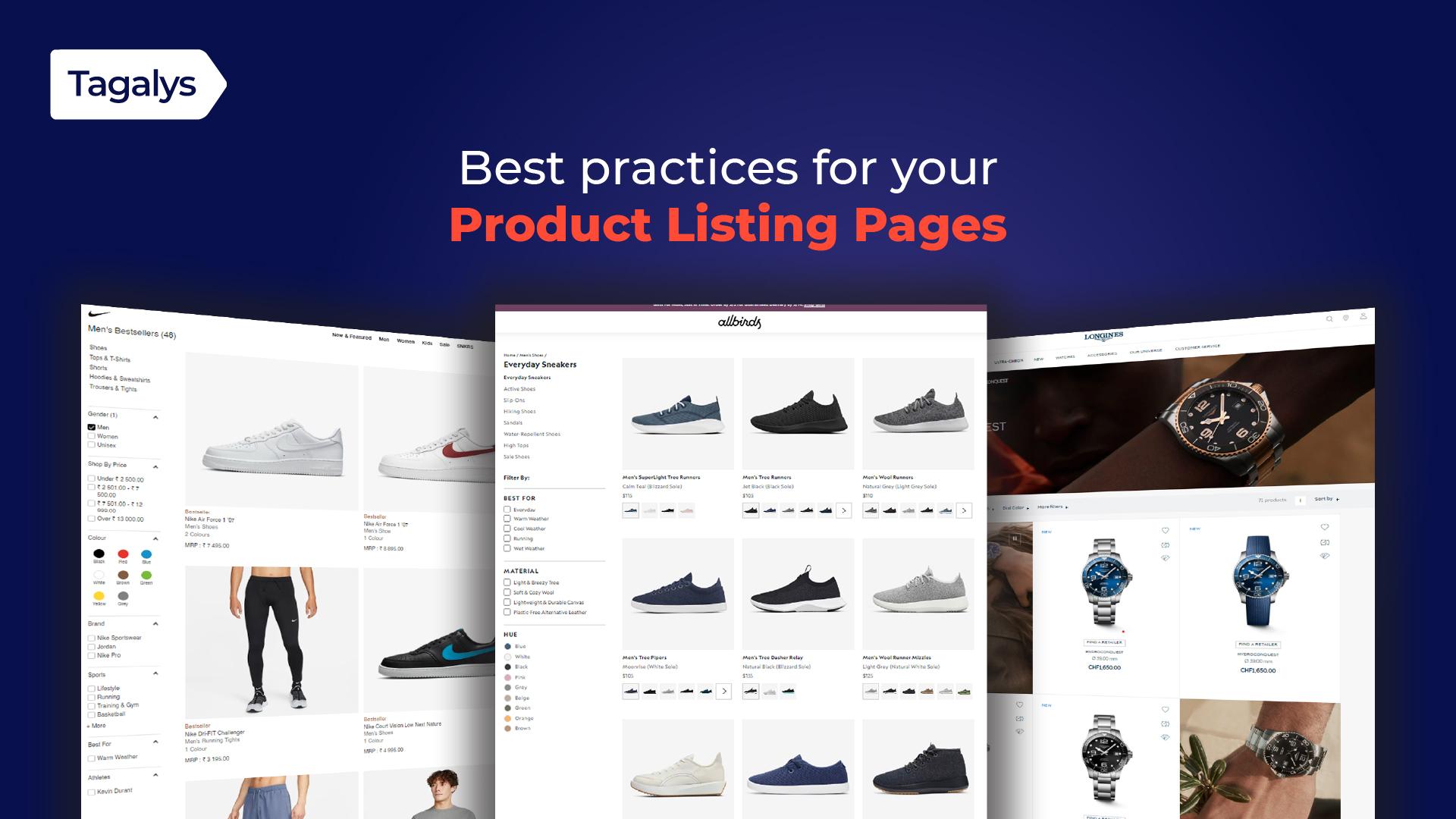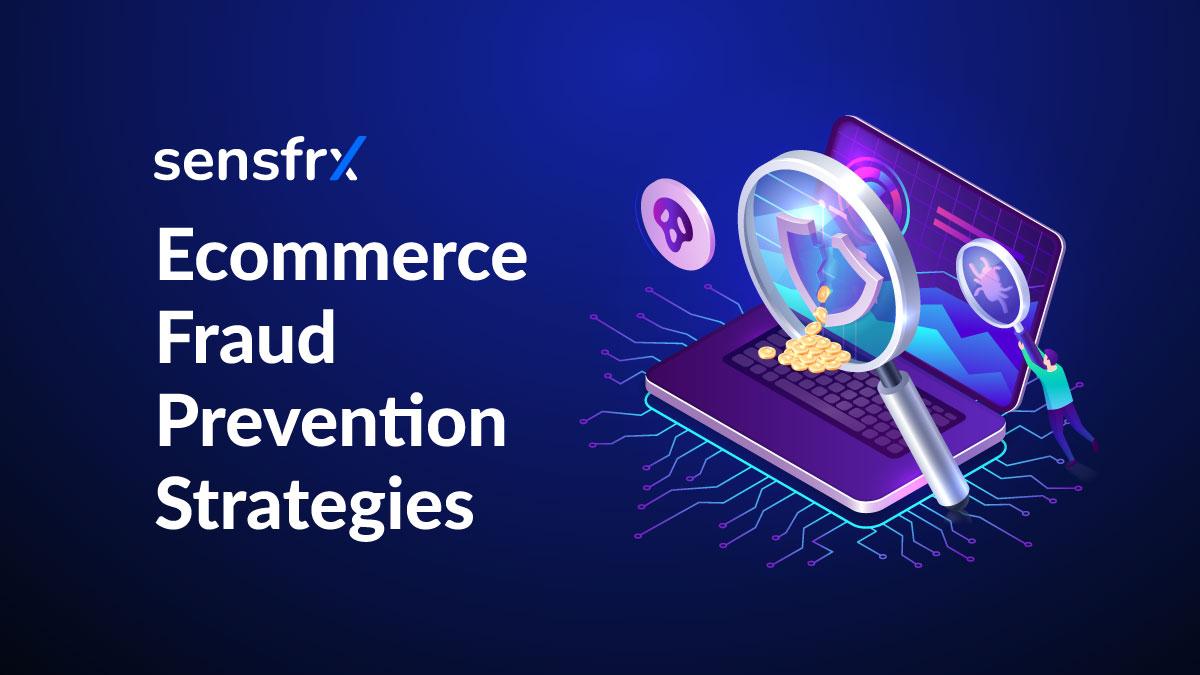Are you looking to sell products online but feel overwhelmed by the thought of setting up a full-fledged eCommerce platform like WooCommerce? You’re not alone! Manny entrepreneurs and small business owners dream of having an online store but find themselves stuck in the complicated web of plugins, settings, and technical jargon. But what if we told you that you could sell your products on WordPress without WooCommerce? Yes, you heard that right! In this article, we’ll explore some simple, effective alternatives that can help you set up your online shop with ease. Whether you’re a seasoned pro or a total newbie, we’ll guide you through various methods that are not only user-pleasant but also budget-conscious. Let’s dive in and discover how you can take your sales to new heights without the hassle of traditional eCommerce solutions!
Understanding the Limitations of WooCommerce for Your Business Needs
While WooCommerce is a powerful eCommerce plugin, it may not cater to all business models effectively. understanding its limitations can help you make informed decisions about your online selling strategy. Here are some critical aspects to consider:
- Complexity for Small Shops: For businesses with a limited product range, WooCommerce might feel overly complex. Setting up and configuring various features can consume time better spent on core business activities.
- Performance Issues: As your product catalog grows, WooCommerce can slow down your website, affecting user experience and potentially leading to lost sales. This is especially concerning for businesses that prioritize speed and efficiency.
- Cost of Extensions: While the base plugin is free, many essential features require paid extensions. This can add up quickly, making WooCommerce an expensive option for small businesses or startups.
- Maintenance and Updates: Regular updates and maintenance are necessary to keep WooCommerce running smoothly and securely. This requires time and technical knowledge, which some business owners may not have.
- Customization Limitations: Although WooCommerce is customizable, extensive customizations may require coding knowledge or hiring a developer. This can be a barrier for those looking to create a unique shopping experience.
To highlight some alternatives, here’s a brief comparison of various eCommerce solutions that might better suit specific business needs:
| Platform | Best For | Key Features |
|---|---|---|
| easy Digital Downloads | Digital Goods | Streamlined selling, discount codes, customer management |
| Shopify | Simplicity | Hosted solution, quick setup, extensive app store |
| Big Cartel | Artists & Makers | Simple interface, customizable themes, low cost |
| Ecwid | Multi-Channel Selling | Integrates with existing sites, social media |
Choosing the right platform hinges on your specific needs and goals.By evaluating the limitations of WooCommerce, you can explore these alternatives to find a solution that offers the features, ease of use, and performance your business demands.

Exploring Alternative Plugins for E-commerce Success on WordPress
While WooCommerce is undoubtedly a popular choice for many e-commerce websites, it’s not the only option available for entrepreneurs looking to sell products on WordPress. Exploring alternative plugins can uncover unique features and streamlined operations that may better fit your specific business model or personal preferences. Here are some standout alternatives worth considering:
- Easy Digital Downloads (EDD): Perfect for selling digital products, EDD offers a robust platform with features like discount codes, customer management, and detailed reporting.
- WP Simple Pay: If you want a simple, straightforward payment solution, this plugin allows you to accept one-time payments without the complexity of a full e-commerce platform.
- Cart66 Cloud: This plugin combines e-commerce with membership and subscription options,making it a great choice for businesses that sell both physical and digital goods.
- Ecwid Ecommerce Shopping Cart: With Ecwid,you can set up a shop that integrates seamlessly into your existing website while also allowing you to sell on social media platforms.
Choosing the right plugin depends on your business’s specific needs. For instance, if you primarily offer digital downloads, the features and analytics provided by EDD might just make your life easier. On the other hand, if your focus is on physical products, Cart66 could offer the versatility you require. It’s essential to weigh each option’s pros and cons against what you envision for your online store.
For those interested in a more hands-on approach, consider a combination of plugins. Many WordPress users find success by integrating a simple payment solution with a membership plugin to create a unique buying experience. For exmaple, using WP Simple Pay alongside a membership plugin can facilitate a smoother checkout process while offering exclusive content to your customers.
don’t overlook the importance of user experience. A well-designed store can significantly influence purchasing decisions. Factors such as page load speed, ease of navigation, and mobile responsiveness should be at the forefront of your plugin selection process. Test different plugins to see which aligns best with your brand and offers your customers the most enjoyable shopping experience.
| Plugin | Best For | Key Feature |
|---|---|---|
| Easy Digital Downloads | digital Products | Comprehensive Analytics |
| WP Simple pay | Simple Payments | Quick Checkout |
| Cart66 Cloud | subscriptions | Membership Options |
| Ecwid | Multi-Channel Selling | Integrates with Social Media |
Setting Up a Simple Product Page Without WooCommerce
Creating a product page without relying on WooCommerce can be a straightforward and rewarding process. By utilizing the built-in features of WordPress,along with a few simple plugins,you can easily showcase and sell your products. Here’s how to do it.
First, start by choosing a suitable theme that supports eCommerce functionalities. many themes are designed with product display in mind, offering features like customizable layouts and easy navigation. Look for themes that are:
- Responsive: Ensure your site looks great on mobile devices.
- Customizable: Select a theme that allows for personalization to match your brand.
- SEO-friendly: Choose a theme optimized for search engines to help customers find your products.
Once your theme is set, the next step is to create a new page dedicated to your products. You can do this by navigating to Pages > Add New in your WordPress dashboard. In the page editor, consider using a page builder plugin like Elementor or Beaver Builder. These tools enable you to drag and drop elements, making it easy to create an attractive layout without coding knowledge.
For the product display, include high-quality images and detailed descriptions. Here’s a simple table layout you can use to organize your product details:
| Product Name | Description | Price |
|---|---|---|
| Product A | High-quality, durable material. | $19.99 |
| Product B | Eco-friendly and made from recycled material. | $24.99 |
| Product C | Available in various colors and sizes. | $29.99 |
After adding your product details, set up a payment method. Consider using plugins like Easy Digital Downloads or Stripe Payments, which allow for secure transactions without the complexity of a full eCommerce solution.Just install the plugin,configure your payment settings,and you’re ready to accept payments directly from your product page.
don’t forget to promote your product page! Use social media, email marketing, and SEO strategies to drive traffic to your site. The more visibility you gain, the more potential customers you can attract.

Leveraging Digital Download Plugins for Selling E-books and Courses
In the age of digital commerce, selling e-books and courses directly from your WordPress site has never been easier, especially when you leverage the right digital download plugins. These tools allow you to manage digital products efficiently without the complexities that often accompany traditional e-commerce solutions like WooCommerce.
Digital download plugins simplify the transaction process, enabling you to focus on creating quality content rather than worrying about the backend operations. Here are some features that make these plugins essential for your online business:
- Easy Setup: Most plugins offer a user-friendly interface that allows you to upload files and set prices in just a few clicks.
- Secure Transactions: Integrated payment gateways ensure that your sales are secure,protecting both your business and your customers.
- Customizable options: Many plugins allow you to personalize your product pages, ensuring that they align with your brand’s aesthetic.
- Analytics: Track your sales and customer behavior with built-in analytics tools that help you optimize your marketing strategies.
Beyond basic functionality, you can enhance customer experience by offering incentives such as discount codes and limited-time offers. For instance, utilizing plugins that support coupon creation can encourage first-time buyers to make a purchase, boosting your initial sales figures. Additionally,consider integrating email marketing tools with your plugin to follow up with customers after their purchase,nurturing them for future sales.
When selecting a digital download plugin,it’s crucial to consider compatibility with your existing themes and other plugins. Below is a simple comparison table of popular options:
| Plugin | Price | Key Features |
|---|---|---|
| Easy Digital Downloads | Free / premium | Highly customizable,extensive add-ons |
| Download Monitor | Free / Premium | File tracking,download logs |
| WP Simple Pay | From $49 | Seamless Stripe integration |
Choosing the right plugin not only enhances efficiency but also creates a seamless experience for your customers,leading to higher conversion rates. Armed with these tools, you’re well on your way to establishing a profitable digital product business right from your WordPress site.
Utilizing Membership Plugins to Offer Subscription-Based Products
If you’re looking to sell subscription-based products on your WordPress site without relying on WooCommerce, leveraging membership plugins can be an incredibly effective strategy.These plugins allow you to create a seamless experience for your customers, enabling them to subscribe to your offerings while managing their accounts easily.
one of the most popular ways to utilize membership plugins is by offering tiered membership levels.Each level can grant access to different products or content, enticing users to upgrade for more value. Consider implementing these features in your membership structure:
- Exclusive Content: Provide valuable resources,such as eBooks,webinars,or premium articles that are only accessible to subscribers.
- Community Access: Create a members-only forum where subscribers can interact, share ideas, and receive support.
- Discounted Products: Offer special pricing on items for members to encourage loyalty and repeat purchases.
When setting up your membership site, it’s crucial to choose the right plugin that fits your business needs. Here’s a quick comparison of some popular options:
| Plugin | Key Features | Starting Price |
|---|---|---|
| MemberPress | Drip content, Coupons, Access control | $179/year |
| Restrict Content Pro | Content restriction, Discount codes, Detailed reporting | $99/year |
| paid Memberships Pro | Multiple membership levels, Customizable, Integrations | Free (with premium add-ons) |
After selecting a plugin, focus on creating compelling subscription packages that speak to your audience’s needs. Consider conducting a survey to understand what your customers would value most. This insight allows you to tailor your offerings and set the right pricing strategy that maximizes conversions.
implementing marketing strategies such as email campaigns and social media promotions can help you reach potential subscribers. Highlight the unique benefits of your membership—emphasizing exclusivity and value added. By showcasing what they will gain, you’ll create a strong incentive for visitors to convert into paying members.
Integrating Payment Gateways for Smooth transactions
when it comes to selling products on WordPress without relying on WooCommerce, integrating a reliable payment gateway is crucial for ensuring smooth transactions. A payment gateway acts as a bridge between your website and the payment processors, making it essential for any online store. Here are some key considerations to keep in mind:
- Choose the Right Gateway: Not all payment gateways are created equal. Consider options like PayPal, Stripe, or Square, which offer easy integration and competitive transaction fees.
- User Experience: Opt for gateways that provide a seamless checkout experience. A complicated payment process can lead to cart abandonment.
- Security Features: Look for payment gateways that comply with PCI DSS standards to ensure your customers’ data is protected.
- Payment Options: A flexible payment gateway should support various methods,including credit/debit cards,mobile wallets,and bank transfers,catering to your customers’ preferences.
Once you’ve decided on a payment gateway, the next step is integration.Most gateways offer plugins or APIs that can be easily integrated into your WordPress site. Here’s a simple table summarizing some popular payment gateways and their features:
| Payment Gateway | Integration Type | Transaction Fees | Key Features |
|---|---|---|---|
| PayPal | Plugin | 2.9% + $0.30 | Wide acceptance, secure payments |
| Stripe | API | 2.9% + $0.30 | Customizable UI, subscriptions |
| Square | Plugin | 2.6% + $0.10 | Invoicing, point of sale |
After integrating the payment gateway, it’s vital to test the transaction process. Run through several test transactions to ensure everything flows smoothly—from product selection to payment confirmation. This step is vital in catching any issues before your customers encounter them.
consider the long-term relationship you want to build with your customers. Offering features such as recurring payments or purchase history tracking can enhance customer satisfaction and encourage repeat business. By prioritizing a smooth transaction experience, you’re not just completing a sale; you’re building trust and loyalty.

Creating an Engaging sales Page That Converts Visitors to Buyers
When designing your sales page, the first step is to understand your audience. Who are they? What are their needs and pain points? By answering these questions, you can tailor your message to resonate with them. Use compelling headlines that grab attention and speak directly to the benefits your product offers. A strong headline sets the tone and encourages visitors to read further.
incorporate high-quality images and videos to showcase your product.Visual content can engage potential buyers and create a more immersive experience. Make sure your images are clear and highlight the key features of your product. Consider including a short video that demonstrates how your product works or testimonials from happy customers to build trust.
Don’t forget the power of concise and persuasive copy. Break your content into easily digestible sections, using bullet points to highlight key features and benefits:
- Easy to Use: Simple installation process.
- Affordable: Competitive pricing that fits your budget.
- Support: 24/7 customer service for your peace of mind.
Another critical element of your sales page is a strong call to action (CTA). This is your possibility to guide visitors toward making a purchase. Make your CTA buttons stand out with contrasting colors and compelling text such as “Buy Now” or “Get Started Today.” The placement of these buttons is crucial—consider positioning them both at the top of the page and at the bottom to maximize conversions.
| Feature | Benefit |
|---|---|
| Mobile-Friendly Design | Reach customers on any device. |
| SEO Optimized | Increase visibility on search engines. |
| Customizable Layout | Match your brand’s identity. |
Lastly, don’t underestimate the importance of social proof. Adding customer reviews, testimonials, and trust badges can significantly enhance your pageS credibility. When potential buyers see that others have had positive experiences, they are more likely to make a purchase themselves. Consider integrating a reviews section or a carousel of testimonials to showcase this social proof effectively.

Using Social Media Integration to Boost Your Product Sales
In today’s digital landscape, integrating social media with your product sales strategy can significantly amplify your reach and drive conversions. by leveraging platforms like Facebook, Instagram, and Pinterest, you can create a seamless shopping experience that engages potential customers where they already spend their time. Here are some effective strategies to enhance your sales using social media.
- Create Shoppable Posts: Utilize platforms that allow you to tag products directly in your posts. This feature enables users to click on a product and make a purchase without leaving the app, significantly reducing friction in the buying process.
- Run Engaging Ads: Invest in targeted advertising on social media platforms. These ads can be tailored to reach specific demographics, ensuring that your product gets in front of the right audience.
- Leverage User-Generated Content: Encourage your customers to share photos or reviews of your product on their social media. Not only does this provide authentic testimonials, but it also creates a community around your brand, fostering loyalty and trust.
- Host Contests and Giveaways: Engage your audience by hosting contests that require sharing your product or tagging friends. This not only boosts visibility but also encourages engagement, creating buzz around your product.
To further enhance the integration of social media with your sales strategy, consider the following tactics:
| Social Media Platform | Best Use for Selling |
|---|---|
| Create a Facebook Shop and run targeted ads. | |
| Utilize shoppable posts and stories to showcase products. | |
| Pin attractive images of your products linked to your site. |
Measuring the success of your social media integration is crucial.Use analytics tools provided by the platforms to track clicks, engagement rates, and conversion metrics. This data allows you to tweak your strategies in real-time, optimizing your efforts for better results. Don’t forget to include clear calls to action in your posts that guide potential customers directly to your product pages.
By weaving social media into your product sales approach, you are not just promoting your products; you are creating a dynamic ecosystem that fosters customer interaction and loyalty.With the right strategies, you can transform your social media channels into powerful sales tools that elevate your business to new heights.

Optimizing Your Product Listings for Search Engines and User Experience
When it comes to selling products on WordPress without WooCommerce,the way you optimize your product listings plays a crucial role in attracting both search engines and potential buyers. Start by focusing on keyword-rich titles that accurately describe your product. This not only helps with SEO but also informs customers about what they can expect. For example, instead of using a generic title like “Blue T-shirt,” try “Men’s Casual Blue Cotton T-Shirt - Cozy & Stylish.”
Next, don’t skimp on product descriptions. A well-crafted description should not only detail the features but also highlight the benefits of the product. Use bullet points to make information digestible:
- Material: 100% cotton for breathability.
- Fit: Regular fit for all body types.
- Care Instructions: Machine washable and easy to maintain.
Incorporating high-quality images is another essential aspect. Images should not only showcase the product but also be optimized for faster loading times. Use descriptive alt texts for each image, as this aids in image search optimization and enhances accessibility for users. A well-structured layout with proper image sizing can significantly improve the overall user experience on your site.
Additionally, consider integrating customer reviews and ratings directly within your product listings. This social proof not only boosts your credibility but also improves engagement. Here’s a simple table to visualize potential customer feedback:
| Customer Name | Rating | Comment |
|---|---|---|
| Jane Doe | ⭐⭐⭐⭐⭐ | Absolutely love this shirt! Great fit! |
| John Smith | ⭐⭐⭐⭐ | Good quality, but a bit larger than expected. |
remember to implement clear and compelling calls to action (CTAs) throughout your listings. Phrases like “Buy Now,” “Limited Stock Available,” or “Add to Cart” can create a sense of urgency and drive customers towards making a purchase. If you combine these elements effectively,you’ll not only enhance your SEO but also create a user-friendly shopping experience that encourages conversions.

Effective Marketing Strategies to Drive Traffic to Your WordPress Store
Driving traffic to your wordpress store without relying on WooCommerce is entirely achievable with the right marketing strategies. Here are some effective techniques to get you started:
- Leverage Social Media: Utilize platforms like Instagram, Facebook, and Pinterest to showcase your products. Post engaging content, including high-quality images, videos, and stories that highlight your offerings. Use relevant hashtags to increase visibility.
- Implement SEO Best Practices: Optimize your website and product pages for search engines. Use keyword-rich titles, descriptions, and alt tags for images. Create blog content related to your products to attract organic traffic.
- Engage in Email Marketing: Build an email list and send newsletters featuring promotions, new arrivals, and engaging content. Personalized emails can significantly increase conversion rates.
- Run Pay-Per-Click (PPC) Campaigns: Utilize Google Ads or social media ads to target specific audiences. Create compelling ad copies that drive clicks and conversions, ensuring you track your results for optimization.
- Collaborate with Influencers: Partnering with influencers in your niche can definitely help you reach a broader audience. Look for those who align with your brand values and have engaged followers.
Additionally, consider utilizing a content calendar to schedule your posts and promotions across various channels. This ensures consistency and keeps your audience engaged.You can also analyze the performance of your strategies using tools like Google Analytics to understand what drives the most traffic to your store.
For a more structured approach, here’s a simple table to summarize different marketing strategies along with their key benefits:
| Strategy | Benefits |
|---|---|
| Social Media Marketing | Increases brand visibility and engagement. |
| SEO | Boosts organic traffic and search rankings. |
| Email Marketing | Enhances customer relationships and retention. |
| PPC Advertising | Drives immediate traffic and sales. |
| Influencer Collaborations | Expands reach to targeted demographics. |
By combining these strategies and regularly evaluating their effectiveness, you can create a dynamic marketing approach that keeps your WordPress store thriving.
Frequently Asked Questions (FAQ)
Q&A: How to Sell Products on WordPress Without WooCommerce
Q1: Is it really possible to sell products on WordPress without using WooCommerce?
Absolutely! While WooCommerce is one of the most popular eCommerce plugins, there are plenty of other ways to sell products on your WordPress site. You can use alternative plugins, payment buttons, and even integrate third-party services to set up a fully functional online store.
Q2: What are some alternative plugins I can use instead of WooCommerce?
There are several great options depending on your needs. Here are a few popular ones:
- Easy Digital Downloads – Perfect for selling digital products like eBooks or software.
- Shopify Buy Button – If you already have a Shopify account, you can use their button to sell on any site.
- Cart66 – Great for simple selling with built-in payment gateways.
- GiveWP – If you’re looking to raise funds or donations, this is a superb option.
Each of these offers unique features tailored to different types of products and services.
Q3: Can I sell physical products without a dedicated eCommerce plugin?
Yes, you can! You can easily set up a product page using the built-in WordPress block editor. Here’s how:
- Create a New Page – Use a visually appealing layout.
- Add Product Descriptions – Write engaging content about your product.
- Include Images – High-quality images can help entice buyers.
- Use Payment Buttons - Services like PayPal or Stripe allow you to add payment buttons directly on your page.
This approach can work well for small shops or one-off sales.
Q4: What about payment processing? How can I handle that without WooCommerce?
There are many options! You can integrate payment processors like:
- PayPal: Create a PayPal button and embed it on your site.
- Stripe: Use a Stripe payment form that you can add to your product pages.
- Square: Perfect if you also sell in-person and want to keep everything in one place.
All of these services offer simple ways to manage transactions without a full eCommerce solution.
Q5: Is there a way to manage inventory without WooCommerce?
Yes, although WooCommerce has extensive inventory management features, you can manually track inventory using spreadsheets or simple inventory management tools.Just keep an eye on your stock levels and update your product pages as needed.
If you want a more automatic solution without WooCommerce,consider using a simple inventory plugin that connects to your payment processor.
Q6: What are the advantages of selling without WooCommerce?
Selling without WooCommerce can be liberating! Here are a few advantages:
- simplicity: Many alternatives are easier to set up, especially for small shops.
- Speed: Fewer plugins can mean faster load times for your site.
- Flexibility: You get to choose the tools and services that best fit your needs, rather than being tied to an all-in-one solution.
Q7: How can I promote my products if I’m not using WooCommerce?
Promotion is key! You can still utilize all the traditional marketing strategies:
- Social Media: Share your products on platforms like Instagram, Facebook, or Pinterest.
- Email Marketing: Build an email list and send out newsletters with product updates and special offers.
- SEO: Optimize your content for search engines to attract organic traffic.
You can create a buzz around your products, even without WooCommerce!
Q8: Any final tips for selling on WordPress without WooCommerce?
Definitely! Focus on building an engaging product page with excellent visuals and clear descriptions. Always prioritize customer support and dialog; answering questions quickly can convert curious visitors into buyers. Lastly, regularly update your content and product offerings to keep your audience engaged and returning for more.
Remember, flexibility and creativity are your best friends when stepping outside the WooCommerce box! Happy selling!
closing Remarks
And there you have it! Selling products on WordPress without WooCommerce is not only possible, but it can also be a straightforward and rewarding experience. Whether you opt for simple plugins, use a page builder, or leverage the power of social media and email marketing, you have the tools at your fingertips to start your online store your way.Remember, the key to success lies in understanding your audience and delivering value through your products. With a little creativity and determination, you can create a seamless shopping experience that keeps customers coming back for more.
So why wait? Dive in and start experimenting with the methods that resonate with you. Your entrepreneurial journey is just beginning, and the possibilities are endless. If you have any questions or want to share your experiences,feel free to drop a comment below. Happy selling!




